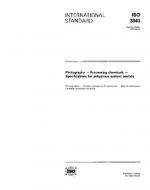|
This section contains 740 words (approx. 3 pages at 300 words per page) |

|
Overview
Sodium acetate (SO-dee-um ASS-uh-tate) is a colorless, odorless crystalline solid that often occurs as the trihydrate: NaC2H3O2·3H2O. A hydrate is a chemical compound formed when one or more molecules of water is physically added to the molecule of some other substance. Sodium acetate trihydrate has three molecules of water of hydration for every NaC2H3O2 unit. Anhydrous sodium acetate readily converts to the trihydrate because it is very hygroscopic. A hygroscopic compound is one that readily absorbs moisture from the air.
How It Is Made
Sodium acetate is prepared by reacting either sodium hydroxide (NaOH) or sodium carbonate (Na2CO3) with acetic acid (HC2H3O2). With sodium hydroxide, for example, the reaction is:
NaOH + HC2H3O2 → NaC2H3O2 + H2O
Key Facts
Formula:
NaC2H3O2
Elements:
Sodium, carbon, hydrogen, oxygen
Compound Type:
Salt (inorganic)
State:
Solid...
|
This section contains 740 words (approx. 3 pages at 300 words per page) |

|


